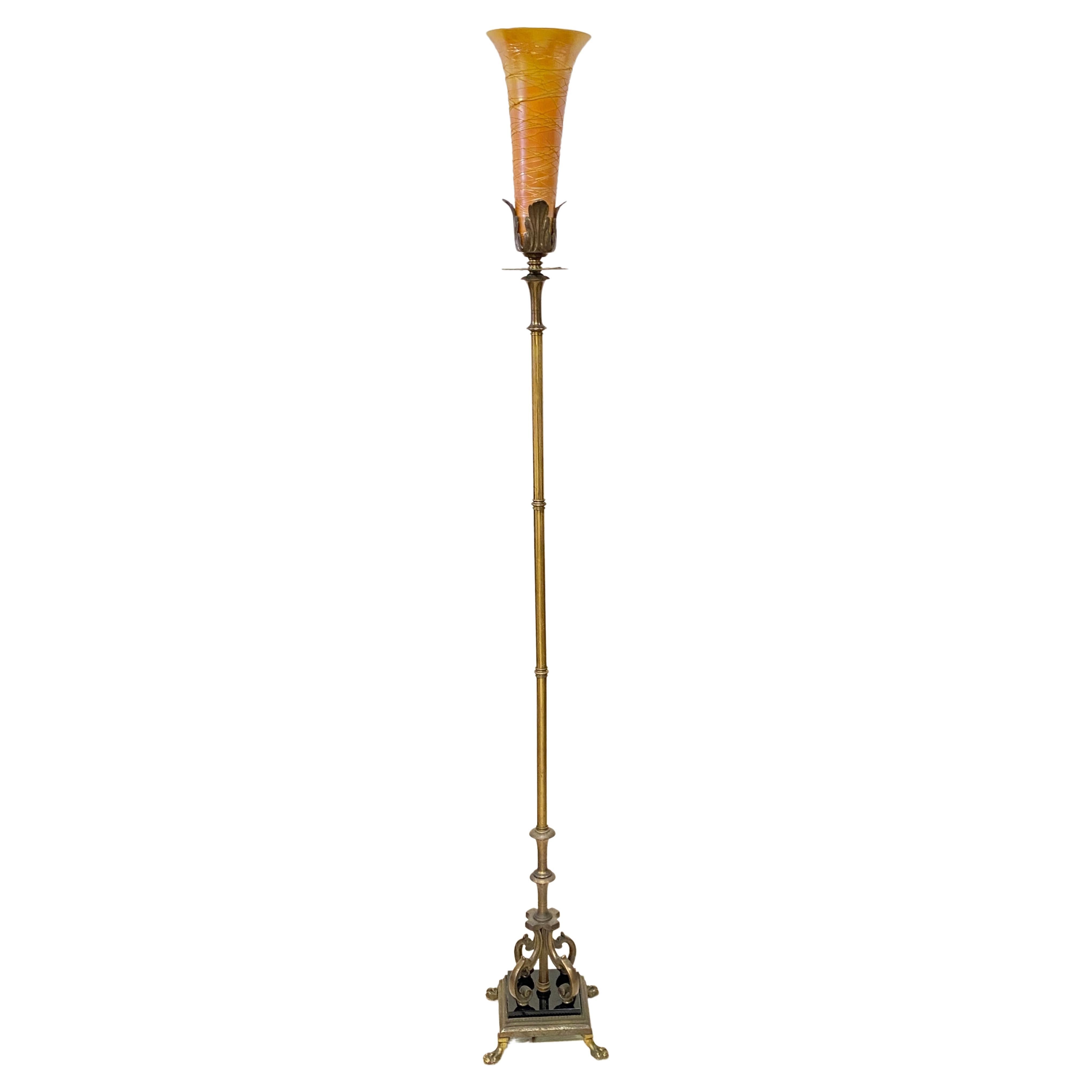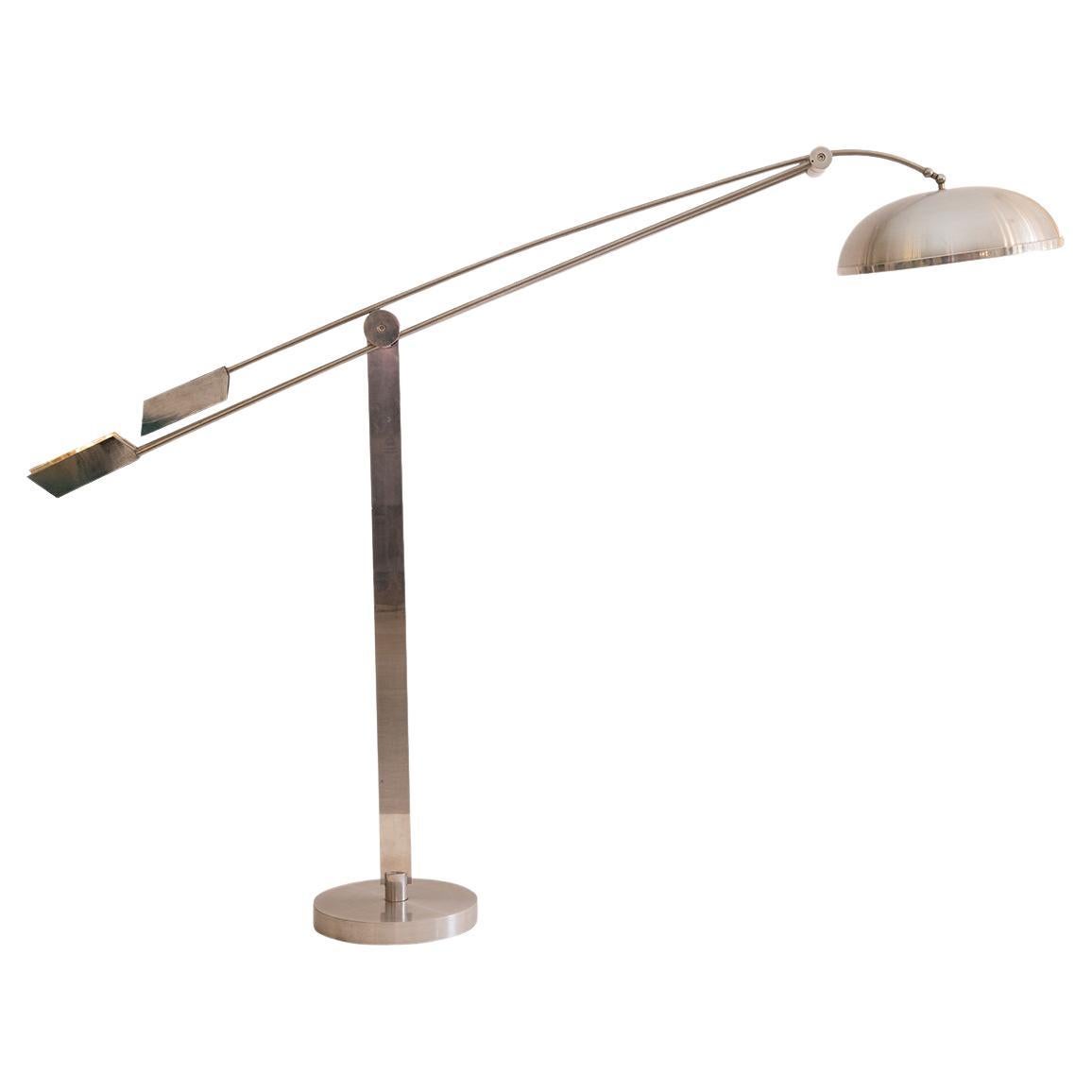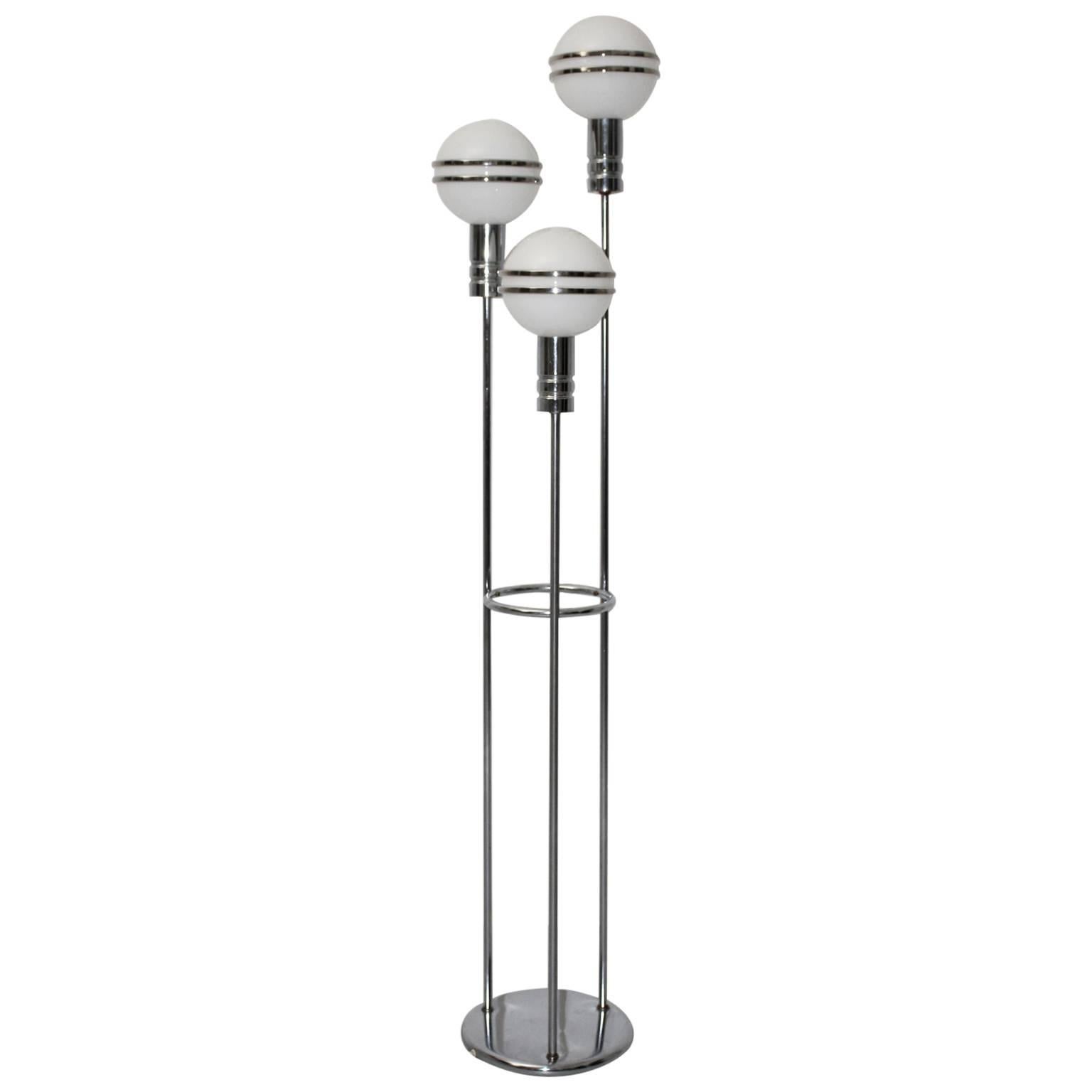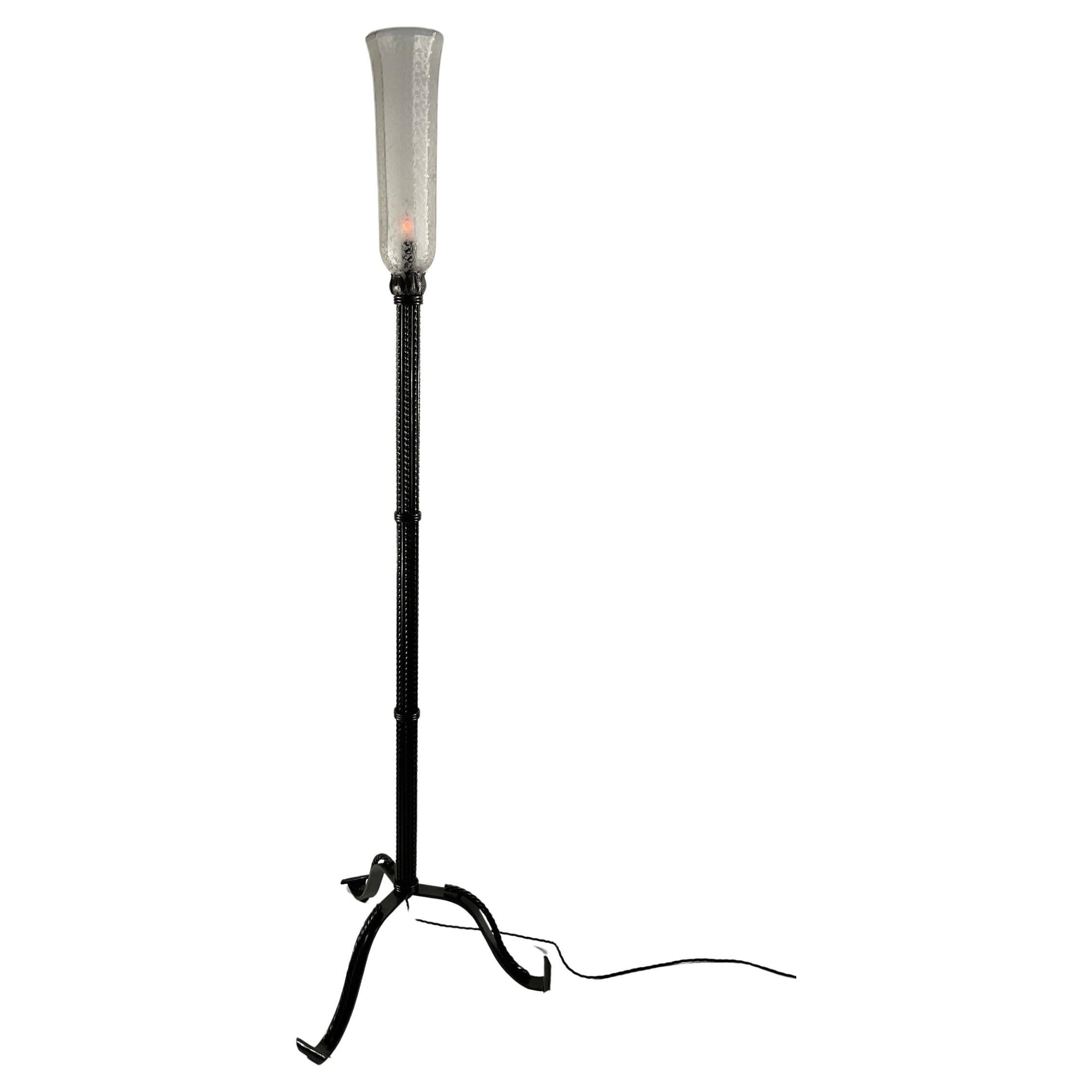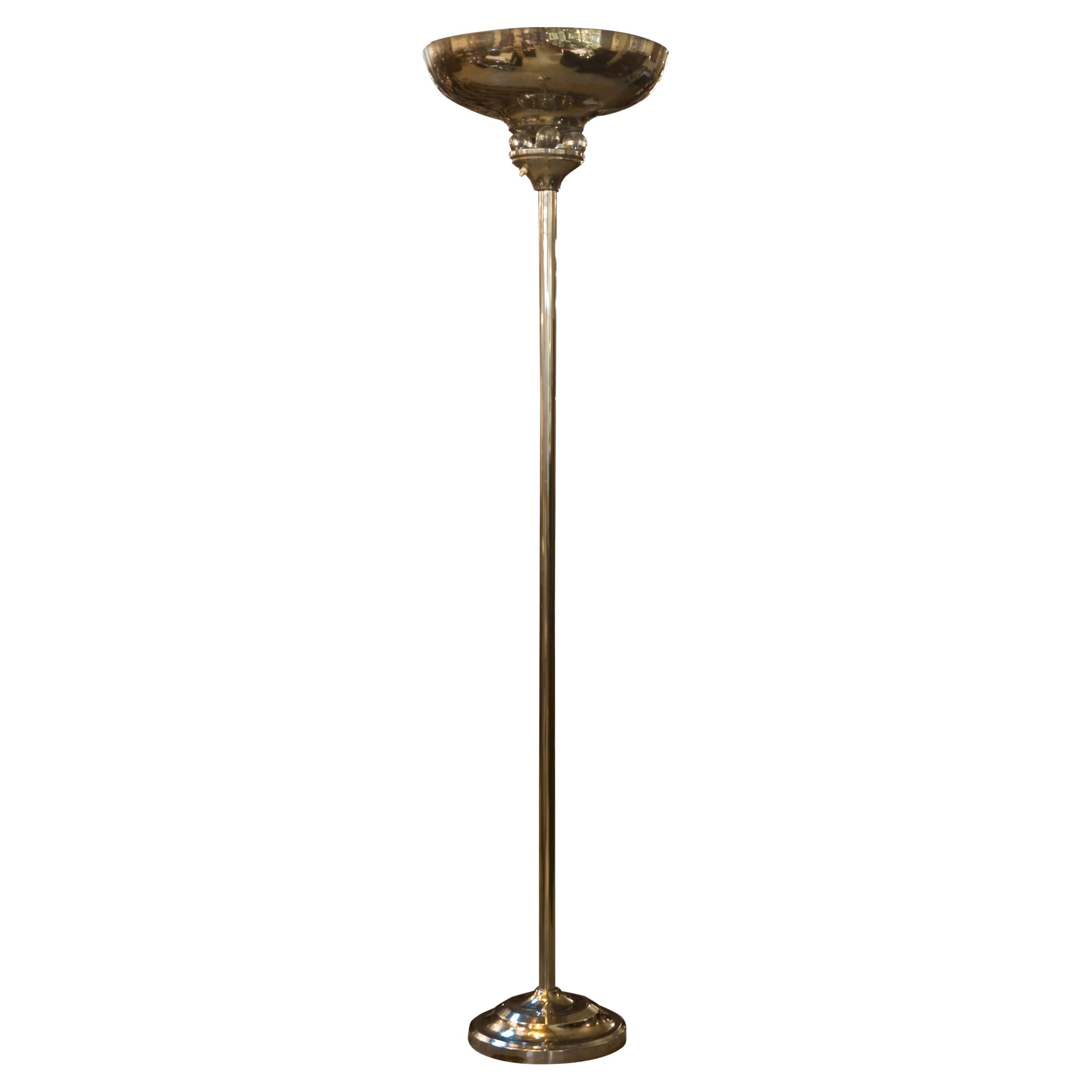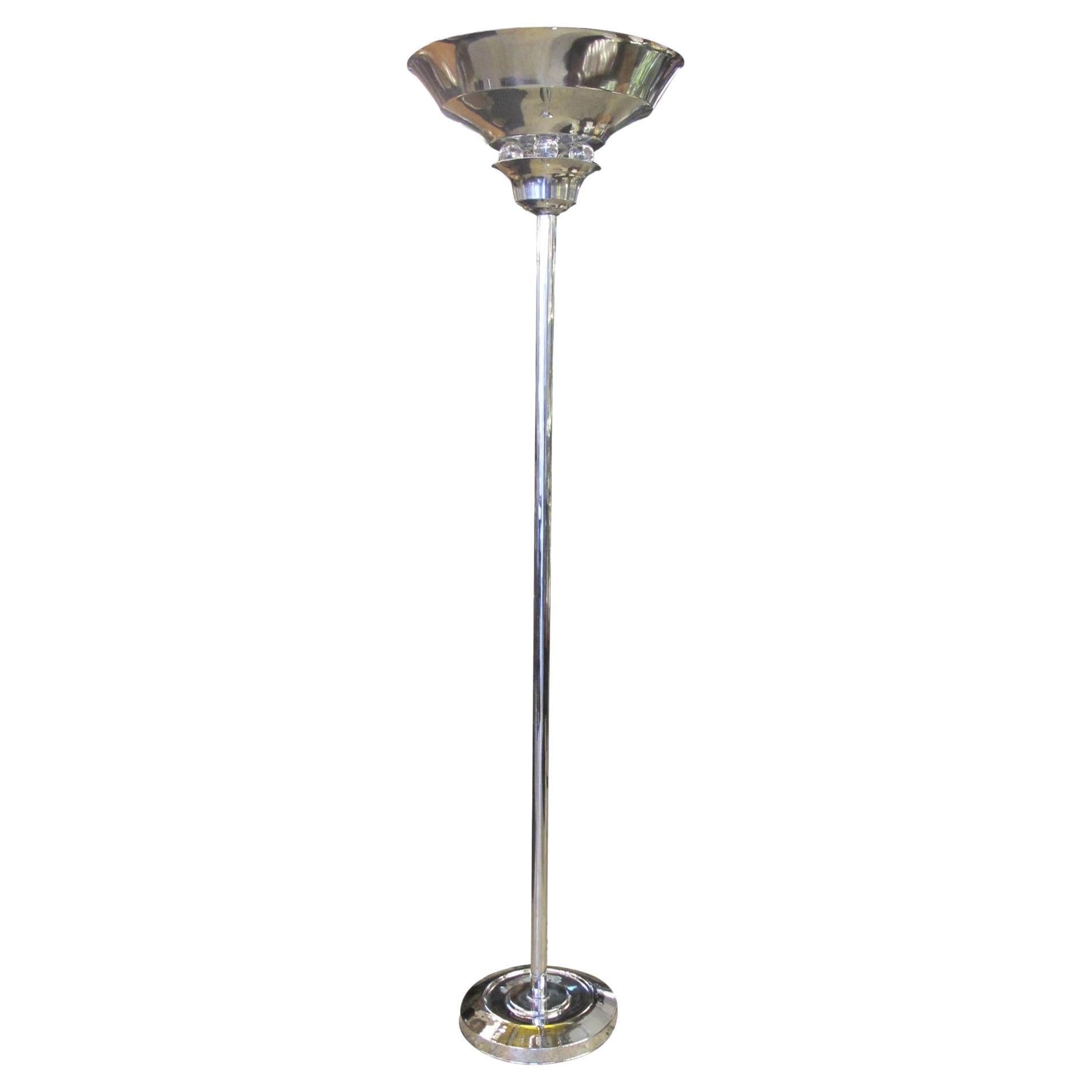Items Similar to 1920's Art Deco Original Statuesque Aluminium Floor Lamp with Amber Glass Trim
Want more images or videos?
Request additional images or videos from the seller
1 of 5
1920's Art Deco Original Statuesque Aluminium Floor Lamp with Amber Glass Trim
About the Item
An Original 1920's Statuesque Art Deco Aluminium Floor Lamp with A Fluted Columnar Centre & Large Dished Uplighter.
Featuring An Attractive Amber Glass Band That Illuminates When Lamp is Switched On.
Retailed by Heals of London
Metal toggle switch for power on and off and UK, has a UK 13amp three pin plug attached.
- Dimensions:Height: 70.87 in (180 cm)Diameter: 22.45 in (57 cm)
- Power Source:Plug-in
- Voltage:220-240v
- Lampshade:Included
- Style:Art Deco (Of the Period)
- Materials and Techniques:
- Place of Origin:
- Period:
- Date of Manufacture:1920's
- Condition:Wear consistent with age and use. Sold in original working condition. With metal toggle switch for power on and off and UK, three pin plug attached. Patina in keeping with age and use. Not pat tested.
- Seller Location:High Wycombe, GB
- Reference Number:
About the Seller
5.0
Platinum Seller
These expertly vetted sellers are 1stDibs' most experienced sellers and are rated highest by our customers.
Established in 2016
1stDibs seller since 2023
53 sales on 1stDibs
Typical response time: <1 hour
- ShippingRetrieving quote...Ships From: High Wycombe, United Kingdom
- Return PolicyA return for this item may be initiated within 14 days of delivery.
More From This SellerView All
- Sered Novoplast Mid Century Modern Rocket Floor Lamp with a Tripod Teak FrameLocated in High Wycombe, GBMid Century Modern Rocket Floor Lamp with a Tripod Teak Frame by Sered Novoplast of Czechoslovakia 1960's No makers marks or labels Fitted with a UK plug Full height 94cm Diameter...Category
Mid-20th Century Czech Mid-Century Modern Floor Lamps
MaterialsTeak
- Art Deco Globular Milk Glass Chrome Table Lamp With Twisted Stem 1920'sLocated in High Wycombe, GBArt Deco Globular Milk Glass Chrome Table Lamp with twisted stem and bakelite switch Takes a bayonet bulb, and it fitted with UK plug, usually between 220-250v. Diameter of the cir...Category
Early 20th Century British Art Deco Table Lamps
MaterialsChrome
- Art Deco Chrome & Pink Glass Table Lamp on a Hexagonal Columnar Plinth, 1920sLocated in High Wycombe, GBArt Deco chrome & Pink Glass Table Lamp On A Hexagonal Sky Scraper Plinth 1920s - Wonderful Art Deco statement lamp - Will complement contemporary a...Category
Vintage 1920s British Art Deco Table Lamps
MaterialsChrome
- Art Deco Over Mantel Fan Wall Mirror with Attractive Amber Glass Panels 1930'sLocated in High Wycombe, GBArt Deco Over Mantel Fan wall mirror with attractive amber glass panels complete with rear hanging chains Circa 1930'sCategory
Early 20th Century British Art Deco Wall Mirrors
MaterialsSteel
- Pair of Art Deco Opalescent Glass Nude Female Candle Holders 1920'sBy LaliqueLocated in High Wycombe, GBPair of Lalique Style Art Deco Opalescent Glass Nude Female Candle Holders On A Square Plinth Base, Unsigned Provenance : The Mavis and John Ware...Category
Vintage 1920s French Art Deco Candlesticks
MaterialsOpaline Glass
- French Art Deco Chrome Table Lamp Inset with Purple Stained Glass Panels, 1930sLocated in High Wycombe, GBOriginal French Art Deco Chrome Table or Desk Lamp Inset With Purple Stained Glass Panels & Boom Arm Pivotable Shade - 1930s Has been Pat Teste...Category
Vintage 1930s French Art Deco Table Lamps
MaterialsChrome
You May Also Like
- American Art Deco Period Floor Lamp with Durand Art Glass Shade, 1920'sLocated in San Francisco, CAAn elegant 1920s brass, cast iron and jet black glass floor lamp stand (base) with period cased iridescent Durand art glass shade. American, early 2...Category
Early 20th Century American Art Deco Floor Lamps
MaterialsBrass, Iron
- Original Art Deco Bauhaus Swiveling Aluminium Floor Lamp of the PeriodBy Woka LampsLocated in Vienna, ATA very elegant swiveling (Measure: 140-250cm) floor-lamp made in aluminium and chrome-plated iron, shade 480cm, riffled reflector. Suitable for the USCategory
Vintage 1930s Austrian Art Deco Floor Lamps
MaterialsAluminum
- Art Deco Vintage Chromed Milk Glass Floor Lamp 1920sLocated in Vienna, ATArt Deco chrome plated steel streamline Floor Lamp with three white milk-glass globes with socket E 14 and each globe shows decoration with two s...Category
Vintage 1920s Art Deco Floor Lamps
MaterialsSteel
- 1920s French Art Deco Wrought Iron Floor Lamp with Frosted Glass ShadeBy Raymond SubesLocated in London, GB1920s French Art Deco floor lamp with etched glass shade. This floor lamp represents an example of the quality and know-how of French artistic ironwork. This work is reminiscent of g...Category
Vintage 1920s French Art Deco Floor Lamps
MaterialsWrought Iron
- Floor Lamp Art Deco 1920, German, Materials: Chrome and GlassLocated in Ciudad Autónoma Buenos Aires, CFloor lamp Art Deco Material: chrome and glass German 1920 You want to live in the golden years, those are the floor lamps that your project needs. We have specialized in of Art Dec...Category
Vintage 1920s German Art Deco Floor Lamps
MaterialsChrome
- Floor Lamp Art Deco 1920, German, Materials: Chrome and GlassLocated in Ciudad Autónoma Buenos Aires, CFloor lamp Art Deco Materials: Chrome and glass German 1920 You want to live in the golden years, those are the floor lamps that your project needs. We have specialized in the Art Deco and Art Nouveau styles since 1982. Pushing the button that reads 'View All From Seller'. And you can see more objects to the style. Why are there so many antiques in Argentina. In the 1880 – 1940 there was a grate wave of immigration encouraged by the periods of war that were taking place. 1st World War took place between 1914 and 1918 2nd World War took place between 1939 and 1945 The immigrants options were New York or Buenos Aires. Tickets were cheap and in Buenos Aires they were welcomed with open arms, as it was a country where everything was still to be done. Argentina was the country of new opportunities, labour was needed and religious freedom was assured, in many cases the of the family travel first until they were settled and then the rest of the family members join them. In the immigrant museum “Ellis Island Immigrant Building” in New York you can se the promotional posters of the boats that would take them to a new life. Between the years 1895 and 1896, Argentina had the highest DGP (gross domestic product) per capita in the world according to the Maddison Historical Statistics index, this situation arose due to the large amount of food being exported to European countries, which were at war. The Argentinean ships left the port of Buenos Aires with food, but they returned with furniture, clothes and construction elements, (it´s common to see this the old buildings of the historic neighbourhood of San Telmo, the beams with the inscription “Made in England)”, as well as many markets that were built in Buenos Aires, such us the San Telmo Market, whose structure was brought by ship and afterwards assembled in 900 Defensa Street. With the great influence of European immigrants living in the country, the children of the upper classes travelled to study in France, resulting in the inauguration of “La Maison Argentinienne”, on 27th of June 1928, in the international city of Paris, which hosted many Argentinians that were studying in Frace. It´s the fourth house to be built after France, Canada and Belgium, being the first Spanish-speaking one. Still in place today (17 Bd Jourdan, 75014, Paris, France). Many of the children of these wealthy families who attended international art exhibitions, museums and art courses abroad, took a keen interest in the European style. This is why Buenos Aires was at the time referred as “The Paris of South America”. Between the years 1890 and 1920 more than a hundred Palaces were built on Alvear Avenue the most exclusive avenue in Buenos Aires. Today some of these palaces have been transformed into museums, hotels and embassies. In the year 1936, the Kavanagh building was inaugurated, it was the tallest reinforced concrete building in South America. During 1994 the American Society of Civil Engineers distinguished it as an “international engineering milestone”, and it´s now considered a World Heritage of Modern Architecture. At the time was common to hire foreign architects such as Le Corbusier, who visited Buenos Aires/Argentina in 1929 and in 1948 he drew up the blueprints for a house built in La Plata City (which was declared a World Heritage Site). In 1947, the Hungarian architect Marcelo Breuer designed “Parador Ariston” in the seaside city of Mar del Plata. After an Argentinean student at Harvard University convinced him to come to Argentina. He worked on an urban development project in the Casa Amarilla, area of La Boca. The Ukrainian architect, Vladimiro Acosta, arrives in Argentina in 1928 and worked as an architect until que moved to Brazil. Antonio Bonet, a Spanish architect who worked with Le Corbusier in Paris, arrives in Argentina in 1937, where he carried out several architectural works and in 1938 designs the well-known BFK chair...Category
Vintage 1920s German Art Deco Floor Lamps
MaterialsChrome
Recently Viewed
View AllMore Ways To Browse
Antique Floor Lamps London
Deco Glass Floor Lamp
Cast Floor Lamp
Lamp With Bamboo Shade
Ella Lamp
Arc Floor Lamp Bow
Galerie Philia Light
Bronze Floor Lamp Giacometti
1933 Worlds Fair Rug
Arne Jacobsen Bellevue
Brass Triple Arm Lamp
Roche Bobois Display
Adjustable Wrought Iron Floor Lamp
Leather And Brass Reading Light
Greta Grossman Grasshopper Original Lamp
Pair Iron Tripod Lamps
S Curve Brass Floor Lamp
X Ray Tube
